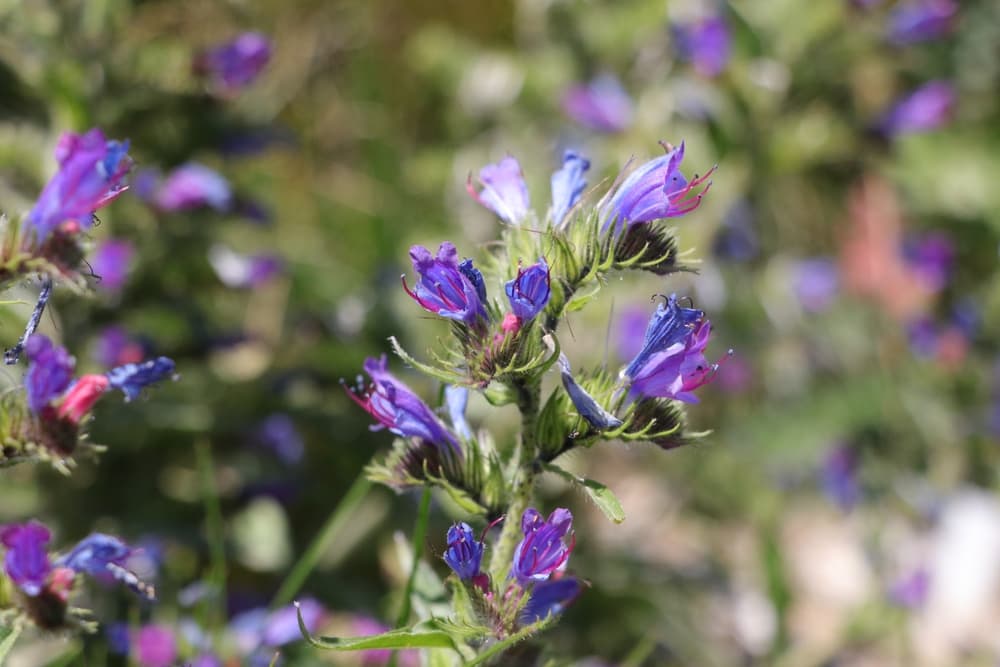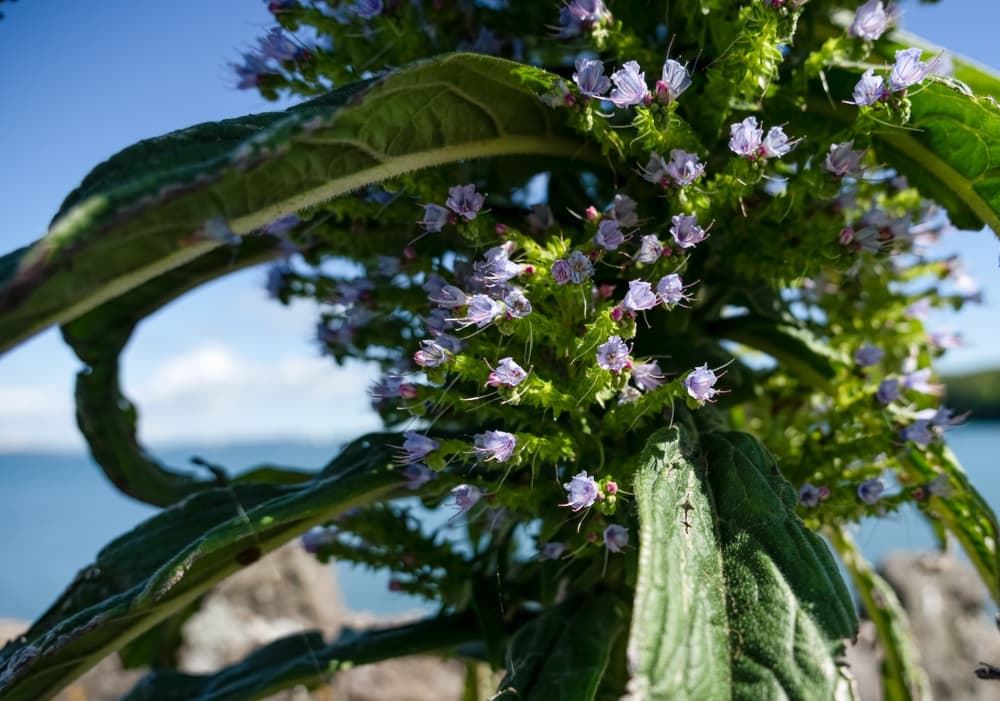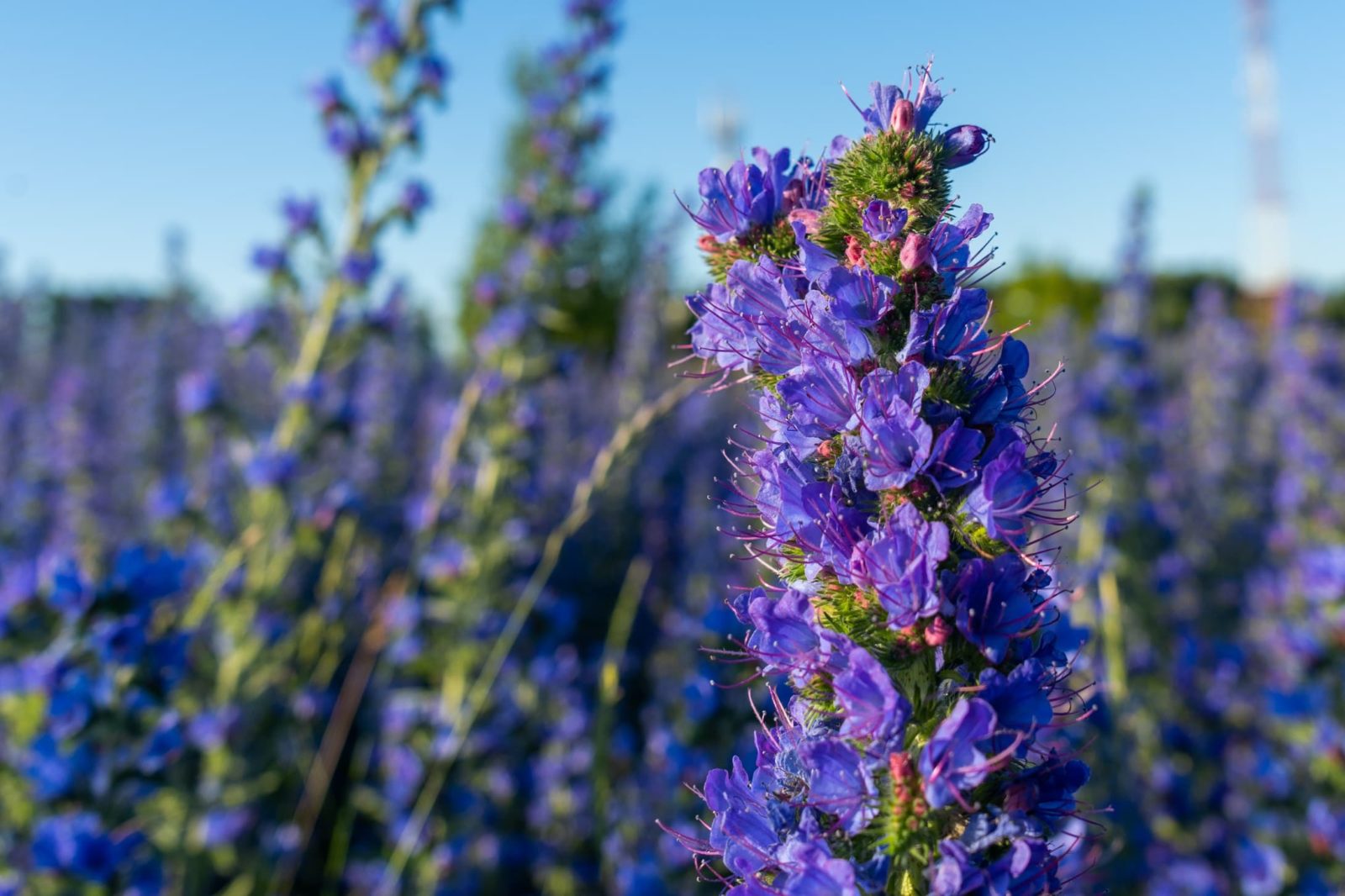ANNUALS > ECHIUM
Chris is a gardening writer and nature enthusiast. He graduated from Oxford Brookes University in 2022 with an MA in Psychology. Chris works with the Leeds Green Action Society, helping their food cooperative by growing various fruit and vegetables on their two allotments in Hyde Park, Leeds.
Reviewed By COLIN SKELLY

Colin is a Horticulturist and Horticultural Consultant with experience in a range of practical and managerial roles across heritage, commercial and public horticulture. He holds the Royal Horticultural Society’s Master of Horticulture award and has a particular interest in horticultural ecology and naturalistic planting for habitat and climate resilience.
Contributions From DAVE GOULSON

Dave Goulson is the Professor of Biology at the University of Sussex and a specialist in the Ecology & Conservation of bees and other insects. He founded the charity the Bumblebee Conservation Trust in 2016 - which now has over 12,000 members - and he is the Director of The Buzz Club. Dave has published more than 300 scientific articles and several books on ecology and insect conservation, including Gardening For Bumblebees.
ECHIUM GUIDES
If you are looking for a plant that will make a real statement, then Echiums may be just what you are looking for.
These striking plants come in an array of colours and vary in size and growing habit, meaning there is an echium for pretty much every garden style.
From formal to the exotic, meadow to conservatory, these boastful, sun-loving plants provide beauty, structure and texture, and are sure to turn heads.
A well-placed echium will offer a real taste of splendour to your garden and, thanks to their nectar-rich blooms, they are irresistible to butterflies and other essential pollinators, including the ever-dwindling honey bee.

These bountiful beauties thrive in hot, dry conditions and, where many plants would struggle, echiums will remain completely unperturbed by sudden heatwaves in the summer months.
With echiums’ tolerance of rising temperatures, you can at least rest in the knowledge that they are giving the bees some much-needed help.
Overview
| Botanical Name | Echium |
| Common Name(s) | Bugloss (Vipers Bugloss etc.) |
| Plant Type | Annual / Biennal Flower |
| Native Area | North Africa, Mainland Europe, Central Asia and the Macaronesian Islands |
| Hardiness Rating | Various |
| Foliage | Rough, hairy, oblanceolate leaves |
| Flowers | Blue/purple or pink/red flower spikes (depending on variety) |
| When To Sow | April, May |
| Flowering Months | June, July, August |
Sunlight
Preferred Sunlight
Full Sun
Exposure
Sheltered
Size
Height
Varies
Spread
Varies
Bloom Time
June – August
Soil
Preferred Soil Type
Most Soil Types (Except Heavy Clay)
Moisture
Well drained
pH
Any
There are 68 species of echiums which includes biennials (which complete their life cycle in two years), perennials (which die down in winter) and shrubs (which provide year-round foliage).

Echiums can be found in suitable climates worldwide with the tallest of the varieties, which can grow up to 5m in height, hailing from the Canary Islands.1Echium pininana. (n.d.). Kew Royal Botanic Gardens. Retrieved March 15, 2023, from https://powo.science.kew.org/taxon/urn:lsid:ipni.org:names:115832-1
These varieties need to grow in similar conditions that the islands provide but they also self-seed prolifically and will quite happily colonise your garden if given the opportunity.
Echium Varieties
When it comes to echiums, part of the fun is choosing the right one for your garden.
The varieties vary wildly, and all have something a little different to offer, and different species lend themselves to different planting styles.
If you aren’t very familiar with this plant, then choosing the right echium for your garden can feel a bit overwhelming.
We anticipated this and have put together a list of some of our favourite varieties to help you choose the perfect echium for you.
E. vulgare

E. vulgare, or viper’s bugloss, is a biennial wildflower with bristly foliage from which erect leafy stems emerge in early summer producing spikes of beautiful bell-shaped flowers in shades of violet, blue or purple.
“Viper’s bugloss is a really fantastic native flower that bees love,” shares Dave Goulson, Bee Ecologist.
Growing to a height of around 75cm and with a 50cm spread, this impressive variety is a magnet for essential pollinators making it a great candidate for a little wildlife or small meadow garden.
It’s also very suitable for sunny mixed borders and provides early summer colour, blooming from June to August.
E. vulgare thrives in full sun, in moderately fertile, well-drained soil; deadheading regularly will encourage extended flowering.
After the flowering period, you can leave the stems uncut and this plant will self-sow freely around the garden.
E. ‘Pink Fountain’

The breathtaking E. ‘Pink Fountain’ is arguably one of the most lusted-after varieties, growing to an impressive height of up to 2m and with a spread of around 1m.
This variety is known for the wide tapered spike of flowers that it produces: up to 35cm wide, and in a dazzling pink.
The plant basically acts as a lighthouse for bees, too, drawing in these important pollinators.
‘Pink Fountain’ is a hybrid, too, giving it the most striking characteristics of E. wildpretii and E. pininana, varieties which sport red and blue flowers respectively.
In the first year you’ll enjoy a rosette of greyish-green leaves, replaced in the second year by the fountain of flowers that lend the variety its name.
This species of echium works its magic best in moist, well-drained soil, in full sun to partial shade.
E. amoenum ‘Red Feathers’

This fascinating, architectural echium is a compact, short-lived perennial which a dark green mound of evergreen leaves from which feathery plumes of russet-red flowers emerge in spring and all through summer.
Growing to just 10cm in height and 8cm in spread, this variety of echium is perfect for filling gaps in borders and will also grow well in a pot or container, giving your patio or decking a taste of the exotic.
E. amoenum ‘Red Feathers’ prefers moist, well-drained soil or compost and should be planted in a spot where it can enjoy full sun.
Be sure to deadhead the blooms to encourage repeat flowering.
E. pininana

Hailing from the Canary Islands, the E. pininana is easily the most recognisable variety and has been given the Royal Horticulture Society’s prestigious Award of Garden Merit.
In the first year, this brilliant biennial forms a low rosette of hairy, silver spear-shaped leaves and then, during the second year, it hoists up its splendid spike, loaded with gorgeous, blue flowers.
Growing to a height of around 1.8m and with a spread of 90cm, this superb specimen will thrive in a sunny sheltered spot in moist well-drained soil and is a perfect addition to the backs of garden borders.
How To Grow
From the varieties above you have probably gathered that they require moist, well-drained soil and a sheltered sunny site when it comes to planting.
“Echium vulgare and E. amoenum are hardy in most UK conditions but E. pininana and E. ‘Pink Fountain’ are less so and will only survive outside in milder coastal conditions or if protected from frost by horticultural fleece,” shares Colin Skelly, a Horticultural Consultant.
They will tolerate partial shade, but grow best in full sun.
Growing From Seed
Echiums can be grown from seed, and you should get sowing in late spring or early summer.

Once the seedlings have germinated, you can transplant them into the garden.
To help the plants establish, water them once planted.
Watering
Once established, echiums are robust and drought tolerant so will not require frequent watering, however, in hotter months they may require a little extra help.
The aim of the game is to keep the soil around them moist, but not soggy.
If you are growing your echiums in pots or containers, then they will rely on you to provide them with water.
Be sure to choose containers with adequate drainage holes to allow excess water to drain away freely.
Echium Plant Care
Echiums really do tend to take care of themselves.
If you are growing a shrubby variety, you can cut off the flower spike after flowering and give the plant a little trim to encourage the plant to maintain its shape and avoid it becoming straggly.

Deadheading is not necessary, but as previously mentioned, it can help to extend the flowering period.
Common Problems
Although echiums are generally disease-free, there are a few pesky pests to watch out for.
Slugs & Snails
Happily, it’s easy to see if you have a snail or slug problem thanks to the crime scene they leave behind with their long trails of silver slime.
Slugs and snails can be combatted with pellets or, if you are unphased by these gross little opportunists, you can simply pick them off the plant and dispose of them.
Caterpillars
Although not a frequent problem, caterpillars can be quite partial to echiums.
Like slugs and snails, they leave a tell-tale trail behind them, and in their case, it’s in the form of holes where they have chomped through the plant.

There are lots of home remedies when it comes to tackling caterpillars, but one of the easiest ways to deal with them is to make the area around the plants they are attacking more attractive to birds.
Simply spread some seeds around the base of the echium and the birds will visit and happily take the caterpillars off your hands!
Elegant echiums are real statement pieces and can truly elevate your garden’s aesthetics, providing interest, beauty and whimsy.
With so many varieties to choose from, you will have no trouble finding the perfect echium for you, whatever the size or style of your garden.
References
- 1Echium pininana. (n.d.). Kew Royal Botanic Gardens. Retrieved March 15, 2023, from https://powo.science.kew.org/taxon/urn:lsid:ipni.org:names:115832-1

